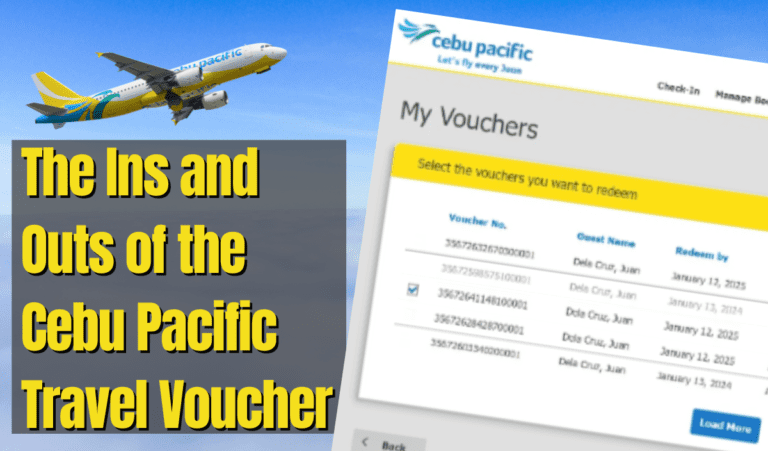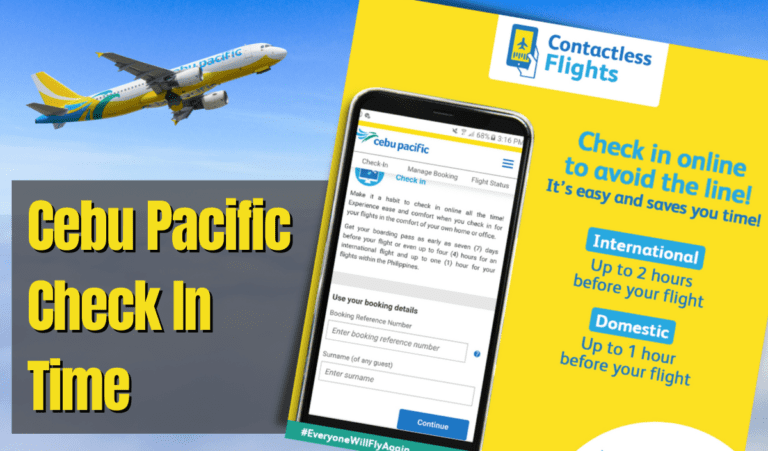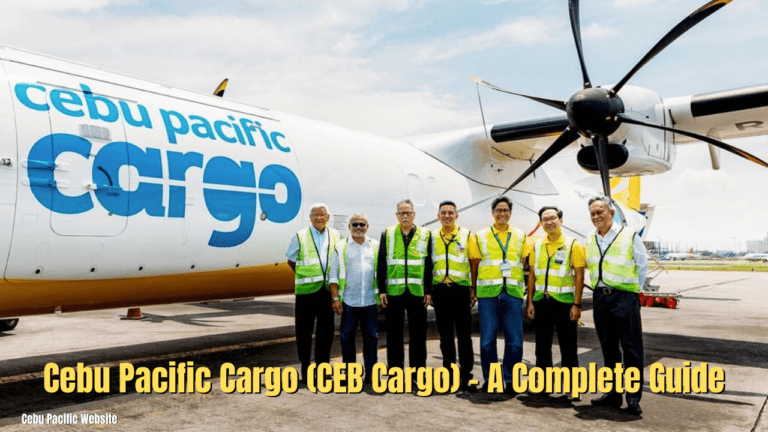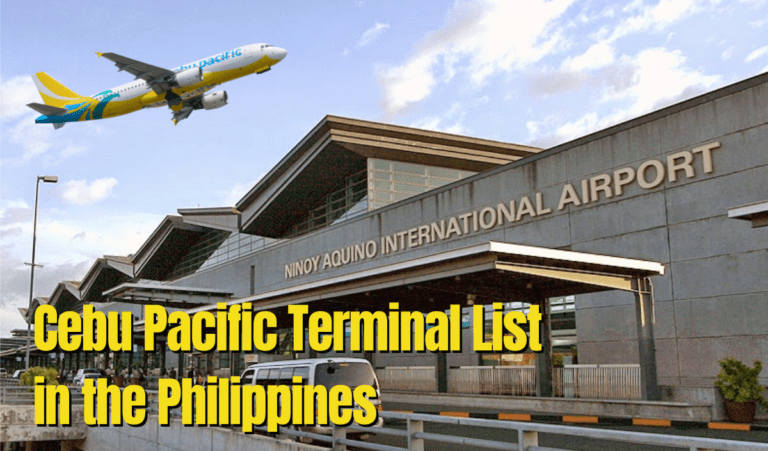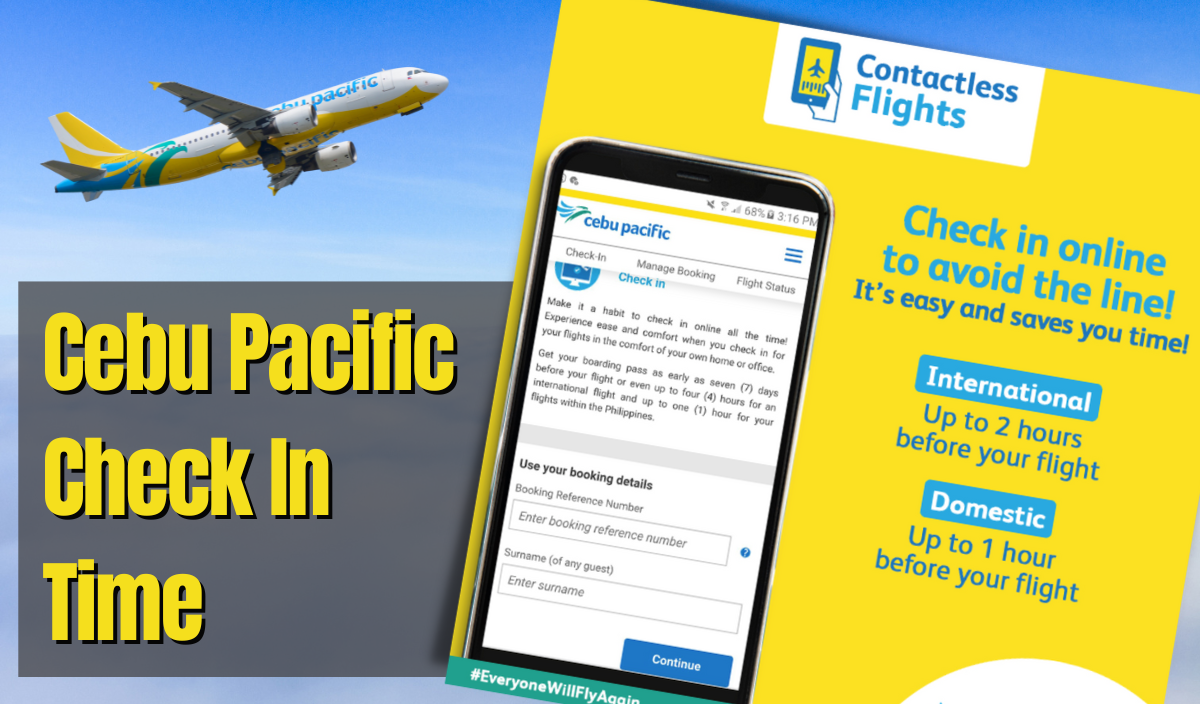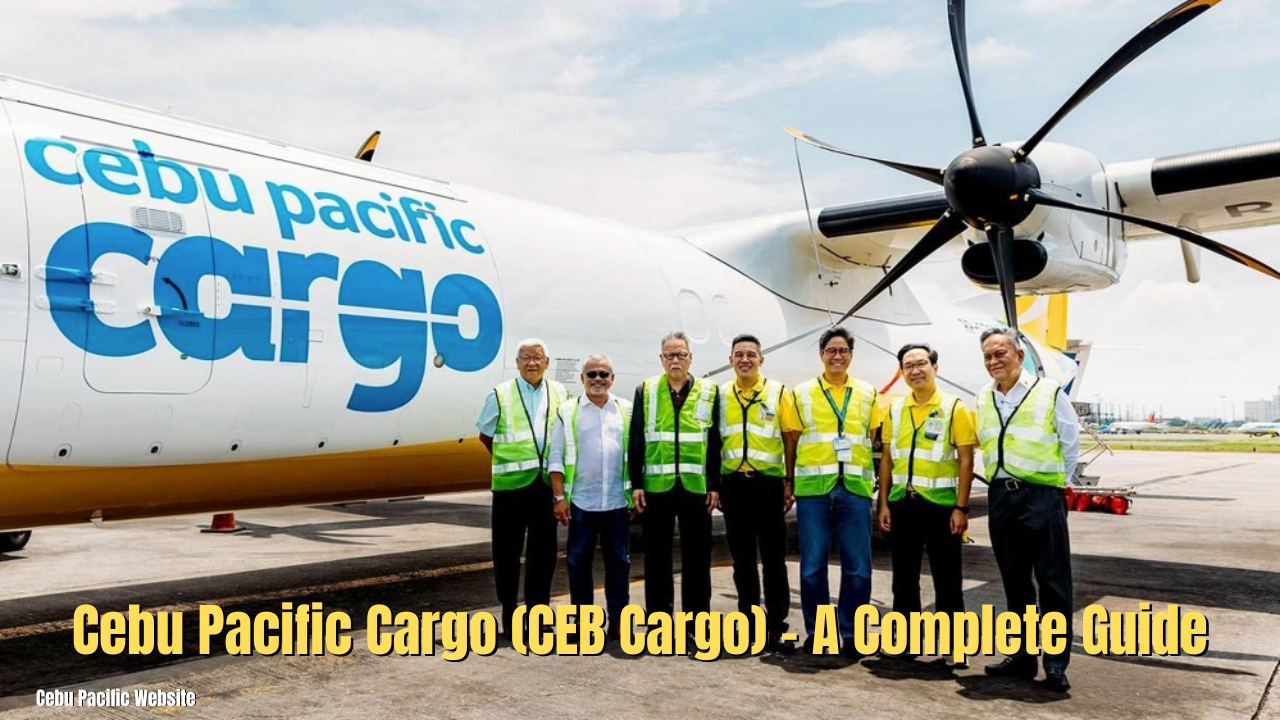The Cebu Pacific Terminal in Manila is the main gateway to the Philippines’ numerous island destinations. As a traveler, knowing how to navigate your way to the terminal efficiently can significantly enhance your overall experience. This comprehensive guide will provide you with how to reach the Cebu Pacific Terminal in Manila, ensuring you arrive at your destination with ease and minimal stress.
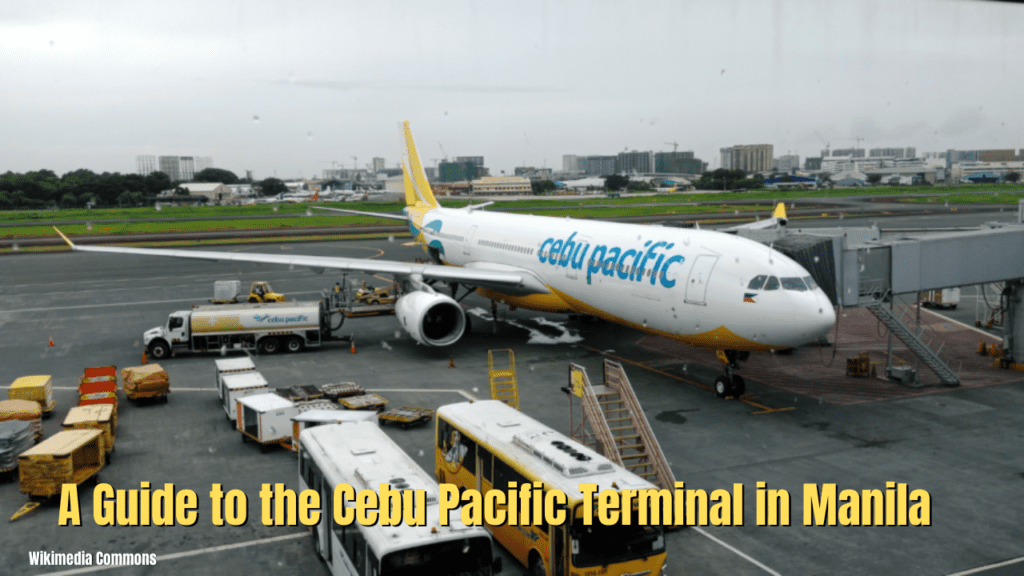
Cebu Pacific Terminal in Manila Quick Links
Check out other Useful Cebu Pacific Travel Tips.
Cebu Pacific Terminal in Manila: Understanding Manila’s Airport Structure
Located in the capital city of the Philippines, Manila, the Ninoy Aquino International Airport (NAIA) is the main international gateway to the country. It consists of several terminals, each serving different airlines and destinations. Understanding the structure of the airport is crucial, especially if you are flying with Cebu Pacific, one of the Philippines’ largest carriers.
Brief on NAIA’s Terminals

NAIA is divided into four terminals: Terminal 1, Terminal 2, Terminal 3, and Terminal 4. Each terminal serves different airlines, both domestic and international. Cebu Pacific primarily operates from Terminal 3, the Ninoy Aquino International Airport Terminal 3 (NAIA-3). It is the newest and largest terminal in the airport complex, offering travelers a range of amenities and services.
NAIA Terminal 3 is Cebu Pacific Terminal in Manila for Domestic Flights
Terminal 3 is exclusively dedicated to Cebu Pacific Air. However, a sister company, Cebgo, Inc., flies from Terminal 4, the Domestic Terminal. It houses the airline’s check-in counters, departure gates, and arrival areas. The terminal is well-equipped to handle the large number of passengers that Cebu Pacific serves daily. It offers a seamless travel experience with efficient check-in facilities, baggage services, and security measures in place.
Public Transportation to Cebu Pacific Terminal in Manila
Getting to the Cebu Pacific Terminal in Manila is convenient, thanks to the various public transportation options.
Accessing the Terminal via Bus
The most cost-effective way to reach the Cebu Pacific Terminal in Manila is by bus. Several public buses connect different parts of Manila to NAIA Terminal 3. The most popular bus lines that serve the airport are the Airport Loop, Pasay Rotonda-Baclaran-Domestic Road, and Nichols-Merville-Baclaran routes. Buses are frequent, and the journey is relatively comfortable. However, do note that traffic conditions in Manila can cause delays, so it is advisable to allocate sufficient time for your journey.
Using Jeepneys to Reach the Terminal
Jeepneys are a commonly used mode of public transportation in Manila. These brightly decorated vehicles offer a cheap and convenient way to travel around the city, including to the Cebu Pacific Terminal. Jeepneys that ply the Baclaran-Nichols route pass by NAIA Terminal 3. Look for jeepneys with signboards that display “NAIA Terminal 3” or ask the driver to ensure you are on the correct route. Jeepneys can get crowded during peak hours, so plan your travel accordingly.
Metro Rail Transit Options
Another option for reaching the Cebu Pacific Terminal is using the Metro Rail Transit (MRT). The nearest MRT station to Terminal 3 is the Taft Avenue Station, part of the Yellow Line. You can take a short taxi ride or a jeepney to the terminal from there. The MRT system provides a convenient and efficient way to avoid the city’s heavy traffic, especially during rush hours. Remember to check the train schedules and plan your journey accordingly.
Private Transport Options to the Terminal
For those who prefer a more private and comfortable mode of transportation, several options are available to reach the Cebu Pacific Terminal.
Reaching the Terminal by Private Car
If you have access to a private car or prefer the convenience of having your own transportation, driving to the Cebu Pacific Terminal is a viable option. The terminal is well-connected to major roads in Manila, including Epifanio de los Santos Avenue (EDSA) and Andrews Avenue. It is advisable to use navigation apps or maps to assist you in reaching the terminal, as traffic conditions can be challenging for unfamiliar drivers. Parking facilities are available at the terminal for both short-term and long-term stays.
Using Taxi Services
Taxis are a popular means of transportation in Manila, and they provide a convenient and comfortable option for getting to the Cebu Pacific Terminal. You can easily find taxi stands outside hotels, shopping malls, and other busy areas in Manila. Look for reputable taxi companies or ask the hotel staff to recommend reliable operators. It is advisable to use meters for a transparent fare calculation. However, the journey time and cost can vary depending on traffic conditions.
Ride-Hailing Services Like Grab
Ride-hailing services like Grab have become increasingly popular in Manila, offering a convenient and reliable way to reach the Cebu Pacific Terminal. Download the Grab app on your smartphone, register an account, and book a ride to the terminal. Grab offers various vehicle options, including sedans, SUVs, and specialized vehicles for larger groups or those with special needs. The advantage of ride-hailing services is that you can easily track your ride, estimate the fare, and pay electronically without needing cash.
Navigating Traffic to the Cebu Pacific Terminal in Manila
Manila is notorious for its heavy traffic, and navigating to the Cebu Pacific Terminal requires some understanding of the city’s traffic conditions.
Understanding Manila’s Traffic Conditions
Manila’s traffic congestion is a well-known challenge for locals and visitors alike. The city experiences heavy traffic during peak hours, especially in central areas and major thoroughfares. Road construction, accidents, and inclement weather can further exacerbate traffic. Knowing Manila’s traffic patterns and planning your journey accordingly can help you avoid potential delays and reduce stress.
Best Times for Travel to Avoid Congestion
To bypass the worst of Manila’s traffic, it is advisable to travel during off-peak hours. Generally, early mornings and late evenings are the least congested times to travel. Leaving your accommodation before the rush hour can ensure a smoother journey if you have a morning flight. Similarly, you will likely encounter less traffic congestion if you have a late-night or early-morning arrival. It is wise to allocate extra time for your journey to account for unexpected delays.
Alternate Routes to the Cebu Pacific Terminal in Manila
To avoid the most congested roads, it is advantageous to familiarize yourself with alternate routes to the Cebu Pacific Terminal. Navigation apps can provide real-time traffic updates and suggest alternative paths to your destination. Some popular alternative routes to Terminal 3 include taking the Skyway or the South Luzon Expressway (SLEX) to avoid the heavy traffic on EDSA. By exploring different route options, you can save time and have a smoother journey to the terminal.
Services at the Cebu Pacific Terminal in Manila
Once you arrive at the Cebu Pacific Terminal in Manila, you can expect various services and amenities to enhance your travel experience.
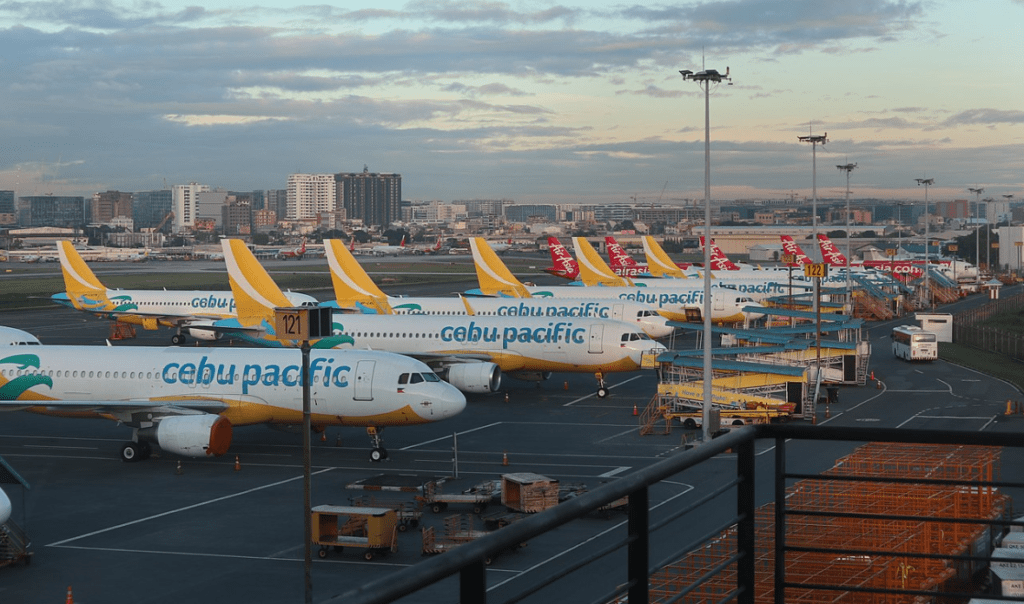
Check-In Facilities
Cebu Pacific provides efficient and user-friendly check-in facilities at Terminal 3. The airline offers various options for check-in, including online check-in, mobile check-in, and self-service kiosks at the terminal. Online and mobile check-in allow you to select your seat, print your boarding pass, or save it on your smartphone. The self-service kiosks at the terminal provide a convenient way to check in if you have not done so beforehand. It is advisable to check Cebu Pacific’s website or app for specific guidelines and any updated procedures.
Baggage and Security Services
Terminal 3 is equipped with baggage services to ensure a smooth process for travelers. Baggage drop-off points allow you to check in your luggage quickly, saving time at the check-in counters. For security purposes, luggage screening procedures are in place to ensure the safety of all passengers. Be mindful of weight and size restrictions for checked and carry-on baggage to avoid additional charges or delays. Ensure that you have all necessary travel documents readily accessible, as they will be checked during the security process.
Amenities at the Terminal
Terminal 3 offers a variety of amenities to cater to the needs of travelers. Several currency exchange counters and ATMs are conveniently located throughout the terminal, allowing you to obtain local currency for your trip. Free Wi-Fi is available throughout the terminal, ensuring you can stay connected during your time at the airport. Additionally, duty-free shops, retail outlets, and dining establishments offer a range of international and local cuisines. Comfortable seating areas, charging stations, and prayer rooms are also available for your convenience.
Security Process at the Cebu Pacific Terminal in Manila
Ensuring the safety and security of passengers is a top priority at the Cebu Pacific Terminal. The terminal follows stringent security measures to maintain a safe and secure environment for all travelers.
Pre-boarding Security Checks
Before boarding your flight, you must go through pre-boarding security checks at the Cebu Pacific Terminal. These security checks are conducted by trained personnel and designed to ensure all passengers’ safety. During the security screening process, be prepared to remove your jacket, belt, and any metal objects. Liquids, gels, and aerosols in your hand luggage must comply with airport regulations. Familiarize yourself with the rules and restrictions to ensure a smooth and hassle-free security check.
Customs and Immigration Clearance
After the pre-boarding security checks, you will proceed to customs and immigration clearance. This process involves verifying your travel documents, including your passport, visa (if applicable), and completed immigration forms. The immigration officers may ask questions about the purpose of your visit and the duration of your stay. Ensure you have all the documents readily available to expedite the clearance process. Be courteous and cooperative with the officers to ensure a smooth experience. Once cleared, you are ready to proceed to the departure area or collect your luggage if arriving.
Security Measures Followed at the Terminal
The Cebu Pacific Terminal implements various security measures to maintain a secure environment. These include surveillance cameras strategically placed throughout the terminal to monitor activity and ensure the safety of all passengers. Trained security personnel are present to handle any security-related incidents or concerns. Additionally, the terminal follows strict protocols for handling baggage, including thorough screening procedures. These measures contribute to the safety and security of passengers traveling through the Cebu Pacific Terminal.
Tips for First-Time Travelers
If you are a first-time traveler to the Cebu Pacific Terminal in Manila, here are some helpful tips to ensure a smooth and hassle-free experience.
How Early to Arrive at the Cebu Pacific Terminal in Manila
You should arrive at the Cebu Pacific Terminal at least two to three hours before your scheduled flight departure time. This allows sufficient time for check-in, security procedures, and any unexpected delays or contingencies. Arriving early ensures a stress-free experience and gives you ample time to navigate the terminal, use the facilities, and relax before your flight. It is always better to be early than rush and risk missing your flight.
Important Documents to Carry
When traveling to the Cebu Pacific Terminal, carrying all the necessary documents is crucial to ensure a smooth journey. These documents typically include your valid passport, visa (if applicable), and printed or electronic copies of your flight itinerary and boarding pass. Ensure your passport has at least six months’ validity from your intended departure date. It is also advisable to carry a form of identification, such as a driver’s license or national ID card, for domestic flights within the Philippines. Keep these documents in a secure and easily accessible place to present when required.
Special Assistance Facilities at the Terminal
If you require special assistance or have specific needs at the Cebu Pacific Terminal, the airport provides various facilities to cater to these requirements. The terminal has ramps and elevators for easy access for passengers with reduced mobility or those using wheelchairs. Special assistance services, such as medical aid and dedicated staff to accompany passengers with disabilities, are available upon request. If you require any assistance, it is advisable to inform Cebu Pacific in advance or contact the airport’s customer service for further information and to make necessary arrangements.
Flight Info and Updates at the Cebu Pacific Terminal in Manila
To stay informed about your Cebu Pacific flight details and deal with any unforeseen changes or issues, resources are available at the Cebu Pacific Terminal.
Finding Cebu Pacific Flight Details
Upon arrival at the Cebu Pacific Terminal, you can easily find your flight details using the information displayed throughout the terminal. These displays provide real-time information about flight schedules, gates, and possible changes or delays. It is advisable to check these displays regularly to ensure you are updated with any changes to your flight. In addition to the displays, you can also refer to the Cebu Pacific website and mobile app or contact their customer service for the latest flight information.
Dealing with Flight Delays or Cancellations
In case of a flight delay or cancellation, staying informed and taking appropriate measures is essential. Cebu Pacific has a support team at the terminal to assist passengers in such situations. It is important to follow the instructions provided by the airline and stay in communication with them. They will provide information about rescheduled flights, alternative options, and the necessary steps. Keep your contact details updated with the airline to receive timely notifications regarding any changes to your flight.
Exiting the Cebu Pacific Terminal in Manila
After arriving at the Cebu Pacific Terminal in Manila, there are several steps to take before exiting the terminal and continuing your journey.
Luggage Collection Post-Flight
Once you have cleared customs and immigration, proceed to the designated baggage claim area to collect your checked-in luggage. Look for the carousel corresponding to your flight number, which will display your flight details. It is important to identify your luggage correctly and ensure you only take what belongs to you. If you have any concerns regarding your luggage, approach the airline’s ground staff for assistance. Once you have collected your luggage, proceed to the exit area to continue your journey.
Transport Options from the Cebu Pacific Terminal in Manila
After exiting the Cebu Pacific Terminal, various transport options are available to reach your final destination. If you are traveling with a large group or have excessive luggage, consider booking a private car or van to transport you to your desired location. Alternatively, you can avail of the taxi services available outside the terminal. Use reputable taxi companies or ride-hailing services like Grab for a safe and reliable journey. Public buses and jeepneys also operate near the terminal, providing cost-effective transportation options for those traveling on a budget.
Navigating out of the Airport Area
As you navigate out of the Cebu Pacific Terminal and the airport area, be prepared for the possibility of heavy traffic congestion. Manila’s roads can become congested, especially during peak hours. Plan your route in advance, considering alternative paths to minimize delays. Use navigation apps or maps to guide you through the city, and be aware of any road closures or diversions. Stay patient, follow traffic rules, and be mindful of pedestrians and other vehicles. With some planning and patience, you can navigate out of the airport area and continue your journey smoothly.
In conclusion, understanding Manila’s airport structure and knowing the specifics of the Cebu Pacific Terminal is essential for a seamless travel experience. Whether you choose to use public transportation or opt for private transport, there are various ways to reach the terminal. Navigating through Manila’s traffic can be challenging, but choosing the best travel times and exploring alternate routes can minimize delays. Once at the terminal, take advantage of the services and amenities available, including check-in facilities, security processes, and a range of food and shopping options.
As a first-time traveler, following the tips will ensure a stress-free experience. Stay informed about your flight through the available resources, and be prepared to deal with any contingencies. Finally, upon exiting the terminal, choose the most suitable transport option and navigate out of the airport area with caution. Considering all these considerations, you will have a smooth and enjoyable journey through the Cebu Pacific Terminal in Manila.
For more information, booking, and information, head to Cebu Pacific Air Official Website or call the reservation hotlines (02) 8702 0888 or (032) 230-8888.
